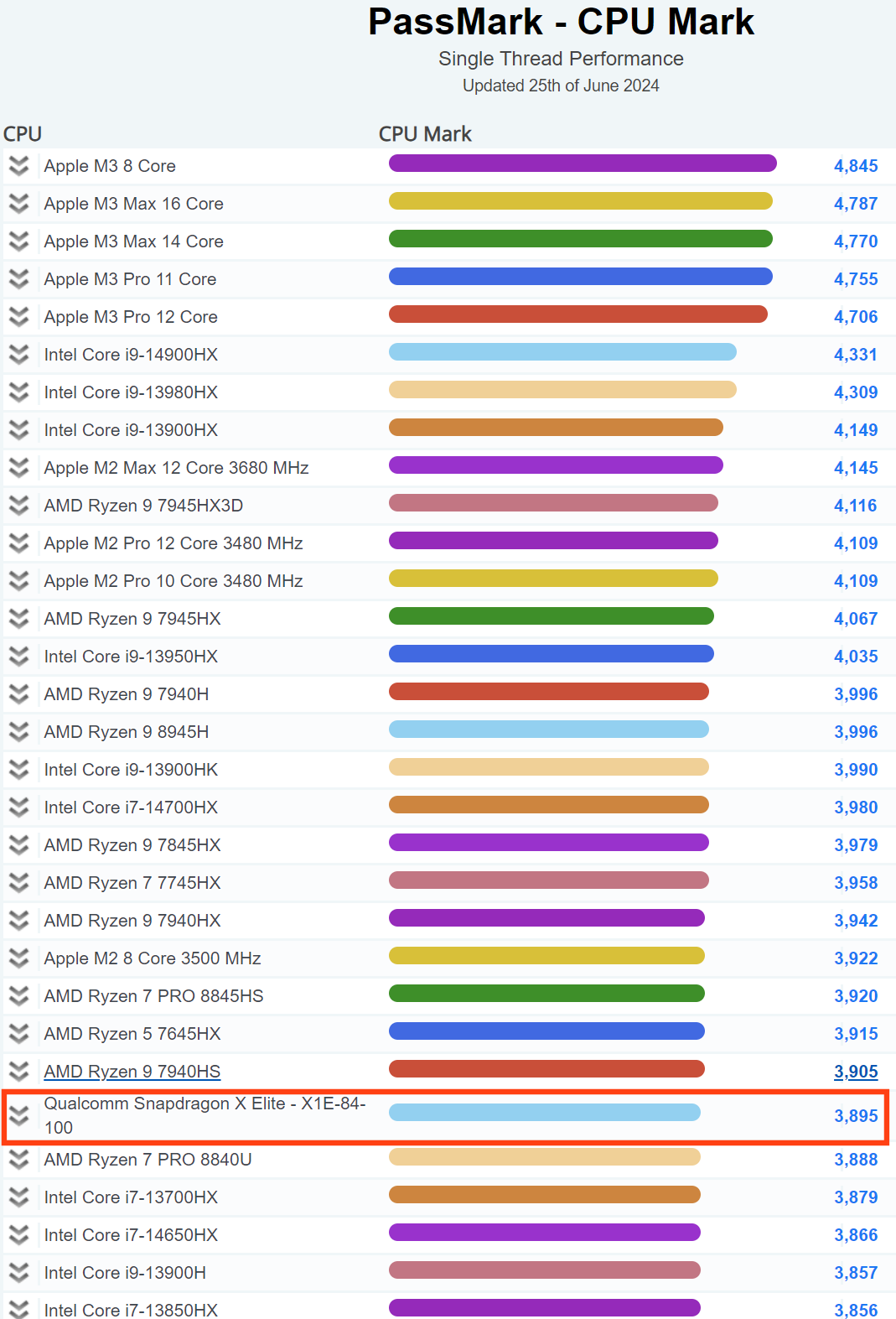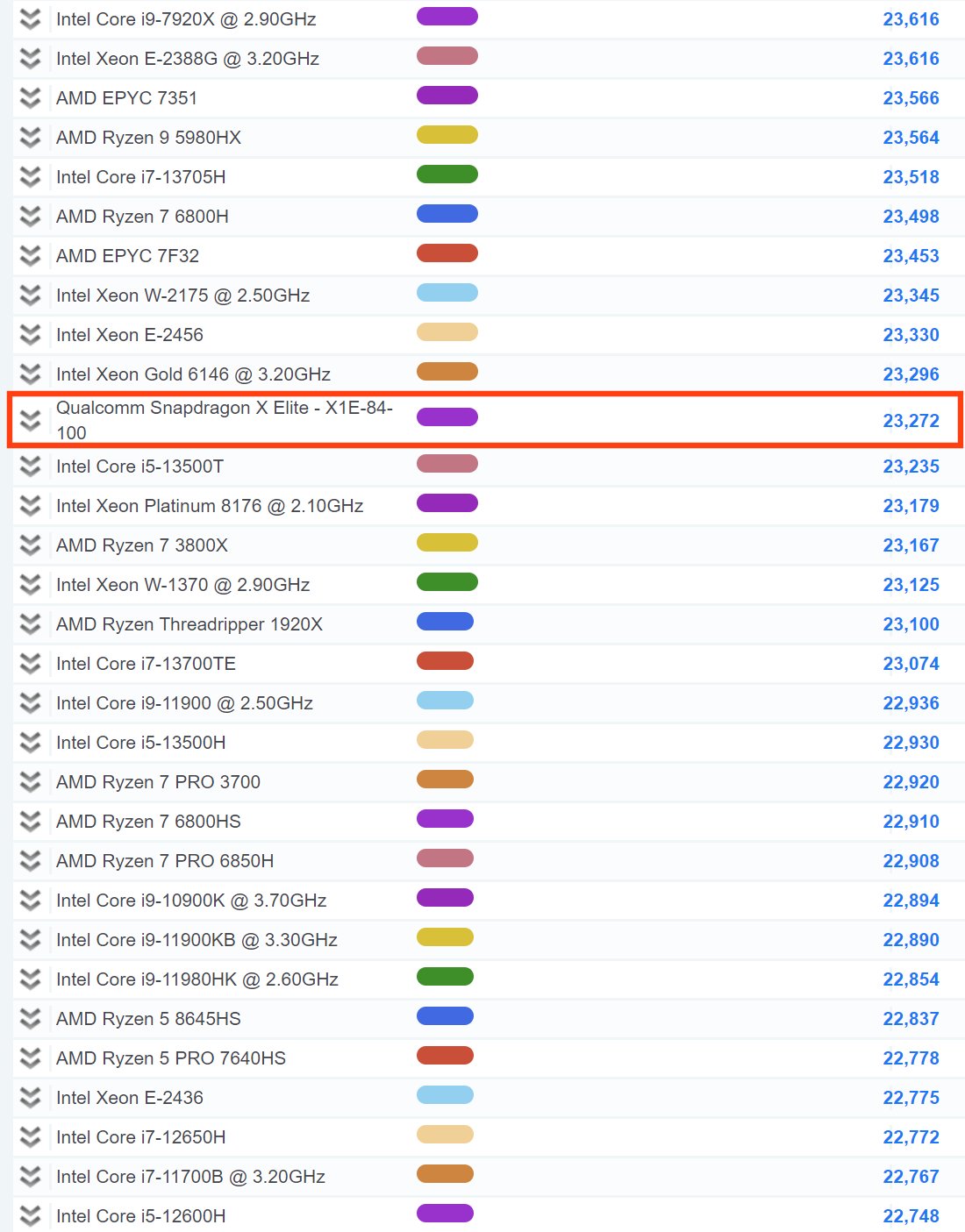Qualcomm’s range-toppingSnapdragon X EliteX1E-84-100 appears to have beenbenchmarkedin PassMark, and its results were quite a mixed bag. On the one hand, a low-power Arm-based processor beats the more power-hungryx86 CPUsfrom AMD and Intel, but on the other hand, it fails to beat its fellow Arm-based rivals from Apple. When it comes to graphics, things do not look exactly good for gamers, either.
Qualcomm’s Snapdragon X Elite X1E-84-100 processor with 12 cores running at 3.80 GHz to 4.20 GHz scores3,895points in thesingle-threaded PassMark benchmark. This is high enough to be on par with Apple’s M2 (3,922points, eight cores, 3.48 GHz), Intel’s Core i5-13500 (3,890, 14 cores, 20 threads, 2.50 GHz to 4.80 GHz, 65W – 154W) or Core i7-13700 HX (3,879, 8C/16T, 2.10 GHz to 5.0 GHz, 45W to 157W). But this is behind Apple’s 12-core M2 Pro running at 3.48 GHz which scores4,109points when it is properly cooled, and is significantly behind M3/M3 Max which operate at 4.0 GHz and score4,770to4,845, well ahead of Qualcomm’s flagship.

When it comes toPassMark’s multi-thread benchmark, Qualcomm’s 12-core Snapdragon X Elite X1E-84-100 processor scores23,272 points, which is ahead of Apple’s 9-core M4 (22,445points, inside a tablet and without active cooling) and Intel’s Core i5-12600H (22,748points, 12C/16T, 2.70 GHz to 4.50 GHz, 35W to 95W). However, the system-on-chip is significantly behind Apple’s 14-core M3 Max (36,346), 12-core M3 Pro (27,318), and even 12-core M2 Pro (26,406).
As far as GPU performance in the PassMark benchmark is concerned, Qualcomm’s Snapdragon X Elite X1E-84-100 with Adreno GPU scores2,759points, which is in line with GeForce MX 350 (2,807).

While the numbers show that Qualcomm’s Snapdragon X Elite X1E-84-100 processor is not exactly a performance champion in PassMark, keep in mind that we are dealing with only one synthetic benchmark that is not even the most popular one. Another point to consider is that Qualcomm has never advertised thermal envelope or power consumption for its Snapdragon X Elite processors. When comparing them to desktop or laptop x86 CPUs, we may be comparing Apples and Bananas to Oranges.
Yet, the power consumption of Snapdragon X Elite X1E-84-100 should be comparable with some ofApple’s latest processors(say, 12-core M3 Max) and if this is the case, then Qualcomm’s SoC just cannot beat its direct competitor in traditional workloads.

In any case, for now, it is too early to draw any conclusions as benchmark results are unofficial and we may be dealing with pre-production hardware and software (though chances that this is the case are low).
Get Tom’s Hardware’s best news and in-depth reviews, straight to your inbox.

Anton Shilov is a contributing writer at Tom’s Hardware. Over the past couple of decades, he has covered everything from CPUs and GPUs to supercomputers and from modern process technologies and latest fab tools to high-tech industry trends.